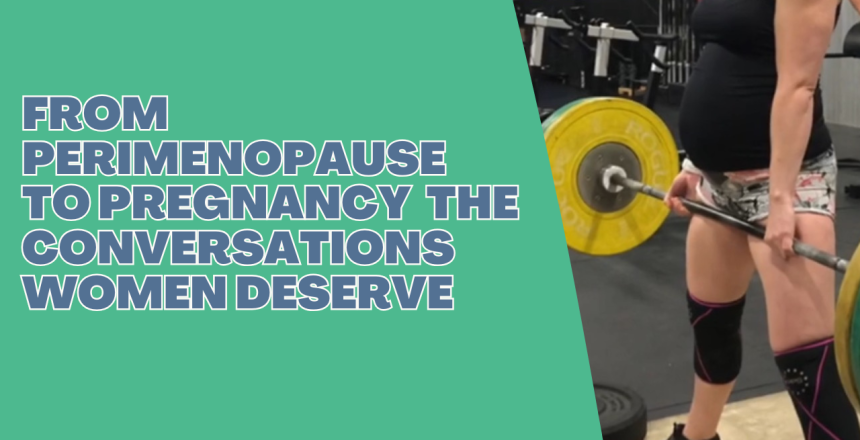
In the last few weeks, social media exploded with claims about a new study suggesting that starting hormone therapy in perimenopause could reduce cancer and chronic disease risk. It sounded revolutionary—until you looked closer.
Here’s what happened:
The “study” wasn’t published—it was a poster at a medical conference (a sneak peek, not a peer-reviewed paper).
Influencers with large platforms ran with it before the researchers even presented it.
The lead author had to post online saying, “Hey, this isn’t ready for public interpretation yet.”
The result? A tidal wave of excitement… minus the nuance.
This is why understanding how research actually works matters. Posters aren’t final data. They’re in progress, meant for discussion and critique. And when social media skips that process, the public gets confident headlines without scientific caution.
Even well-meaning clinicians online can over-simplify or misinterpret early findings. As healthcare providers and consumers, we all need to slow down the scroll and remember: science is a process, not a post.
A listener wrote in:
“I’m 8 weeks pregnant, almost 40, and an athlete. I look mostly the same but can’t stick to my previous routines. I get out of breath with lighter weights—it’s humbling.”
Every mom-to-be who trains can relate. That early fatigue and breathlessness isn’t “losing fitness.” It’s physiology.
As soon as you see that positive test, your body shifts into overdrive—expanding blood volume, supporting a growing placenta, and rerouting oxygen delivery. You might not look pregnant, but your body is already working overtime.
And when you’re not telling your gym friends yet, it can feel isolating. You’re moving differently, performing differently, but silently. That’s hard.
The good news? This phase passes. Early pregnancy is about adaptation, not regression. Your body’s doing something incredible—you’re just on the inside of the transformation.
Another listener asked how to program strength training in early pregnancy:
“I’m lifting three days per week, but feeling breathless and tired. Should I change my sets and reps?”
Here’s the reality: there’s no single formula—but there are smart principles.
Keep it full-body. You’ll naturally hit all major muscle groups across three weekly sessions.
Superset for efficiency. Pair upper + lower moves (like rows with squats).
Adjust load, not commitment. If fatigue is high, drop the reps or load—but keep moving.
Progress when you can. Pregnancy doesn’t mean permanent scaling. You can still build strength.
Nine months is a long time. There’s space for both progress and modification—depending on the day.
Pelvic and sciatic pain can show up in pregnancy for all kinds of reasons—changing posture, hormone shifts, and more demand on core stabilizers.
Belly bands or support belts can sometimes help by giving extra external support when the ligaments become more lax. They’re especially useful if you’re standing all day (think teachers, nurses, daycare workers).
They’re not magic, and not everyone feels relief—but for some, it’s the difference between pain-free mobility and daily struggle.
Two commonly recommended options:
Serola Belt: simple, affordable, wraps low across the hips.
FIT Splint: provides gentle compression under and over the belly.
If cost is a concern, borrow one from a friend before buying. If it brings even partial relief, it’s worth it.
But remember—the real long-term fix is strength and movement, not just support.
One fascinating research question emerging in pelvic health: how much do previous injuries influence pregnancy pain?
If someone had sciatica, pelvic pain, or back issues before pregnancy, those tissues may already be vulnerable. Pregnancy then layers new demands on top.
That’s why early strength training, mobility, and recovery matter—not just to “bounce back,” but to build resilience beforesymptoms flare.
So when we talk about prevention, we’re really talking about preparation—for pregnancy, for postpartum, and for life.
Social media loves absolutes. But women’s health isn’t black and white. It’s layers of physiology, psychology, and experience.
That’s why long-form spaces like podcasts—and thoughtful listeners like you—matter so much. They allow for nuance, honesty, and context.
Let’s keep the conversation going: less fear, more facts, and a lot more compassion for ourselves and each other.
Not all “viral research” is peer-reviewed—check the source.
Early pregnancy fatigue is normal, not weakness.
Modify training based on symptoms, not stereotypes.
Belly bands can help, but strength is the foundation.
Your injury history influences how you move in pregnancy.
Science needs nuance—and women deserve it.

Christina Prevett is a pelvic floor physiotherapist who has a passion for helping women with different life transitions, including postpartum care and menopause.